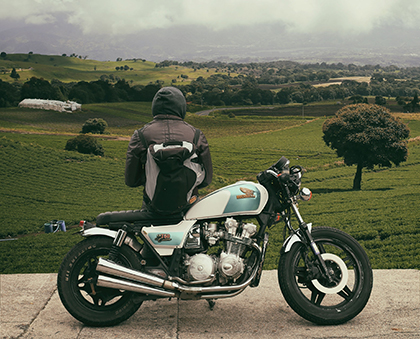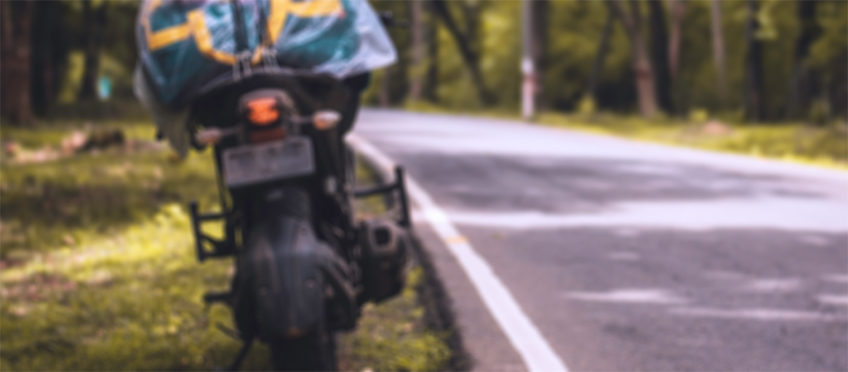Moto-camping extends the freedom we get from riding. We get to spend more quality time with our bikes, cruise the open roads and explore the great outdoors. However, it does necessitate more planning and preparation than pulling up to a motel. A few wise decisions make the difference between enjoyment and misery.
To help successfully prepare you for your next moto-camping journey, we’ve compiled a list of essentials and some tips to consider.
Equipment Essentials:
Tent
Choose one that’s lightweight and an appropriate size for the number of people who will be using it that packs down into a small stuff sac. Even if you’re traveling solo, a two or three-man version gives you space to hold your clothes without feeling confined and won’t take up much more space.
Look for a two-door tent with a made-to-fit waterproof fly-sheet and ground sheet. If possible, choose one with a vestibule, convenient for storing riding gear, boots, and helmet. It allows you to store wet gear without getting the rest of your things wet, or protect your things from the elements and keep them dry for the next day’s use.
Sleeping Bag
Look for a style that’s long enough for your height, allows movement, and is appropriate for the temperatures you’ll be camping in. Use the comfort reading as a guide, then add a five-degree buffer to account for individual variation. The appropriate fit keeps you warmer by preventing unnecessary air flow.
Different physiology between men and women mean different requirements for sleeping bags. Women’s are usually narrower in the shoulders and wider in the hips. Women produce less body heat than men so a warmer bag, with added insulation near the feet and torso helps women stay more comfortable on cold nights.
Sleeping pad
Whether you choose a foam pad, air mattress, or self-inflating pad, you need something to protect you from cold, hard, and potentially damp ground. A good sleeping pad is worth its weight in gold after a long day of riding.
Travel pillow
Many people wad up clothing and make do with a lumpy headrest. Better yet, bring a lightweight travel pillow that packs down into almost nothing. Your neck will thank you.
Headlamp or flashlight
A headlamp is preferable as it frees up your hands to pitch your tent, cook, or otherwise find the way around your campsite in the dark. LED lights last a long time but make sure to bring extra batteries. Rechargeable solar lamps are another good option.
Lightweight cookstove
Unless you plan on eating out, bring a stove and lightweight cook set. Stoves are remarkably lightweight; you’ll also need a fuel cannister and additional fuel. Look for dishes and utensils that nest inside each other and are versatile. It’s surprising how little you have to bring, even if you are cooking your meals.
 External battery pack
External battery pack
If your bike doesn’t have a charger for your mobile phone, consider installing one. An external pack is handy for keeping a phone and small electrical paraphernalia charged when you don’t have plug-in access.
Miscellaneous items
Bring multi-functional items, and preventative items to keep the good times rolling. A high quality multi-tool is light-weight and will come in use over and over again. Some other items include, utility knife, bike lock, duct tape, zip ties, a lighter or matches, essential bike tools, a basic first aid kit with bandages, medications, insect repellent, anti-allergens, and spare plastic bags.
Luggage
Carry everything in durable, waterproof bags. While you can get gear designed specifically for motorcycles, camping equipment stores also have a good selection of durable designs in an assortment of sizes. Motorcycling is hard on material so make sure you choose something that can withstand the wind and weather.
New to Moto-Camping?
1. Test your equipment before putting it to use on the road. Make sure you know how to put up your tent and know how all the pieces fit together. Some of them may seem superfluous but you’ll find out how necessary good pegs and guy wires are when pitching a tent in the dark or rain. Set up and light your stove so you’re not fumbling, frustrated, and disappointed when it’s time to eat.
2. Test-pack your bike. Even the lightest camping gear adds weight and bulk to your load. Keep the weight balanced and as low as possible.
3. Try a short overnight test run under favorable conditions before setting off on a longer moto-camping tour. It will help work out the kinks and show you where you need to adjust what you bring or how you pack it.
4. Don’t leave it too late in the day to find a camp site, especially in peak season. You don’t want to be searching or setting up your tent in the dark or a farmer’s field.
5. Prepare for remote wilderness camping gradually by starting at a campsite with nearby water and electrical services.
6. Affix straps to hold everything securely in place on your bike. Rok straps are far more effective (and safe) than bungee cords or a cargo net.
Approach moto-camping wisely. Plan your trip, purchase high quality items (they’re usually more durable and will lighten your load), and maintain your sense of humour and perspective. Remember, there will be challenging or uncomfortable moments during your moto-camping journey, but these will make for some of the best stories and memories to swap with your buddies.
We look forward to hearing about your trip and if you have additional tips feel free to leave a comment.








join the conversation